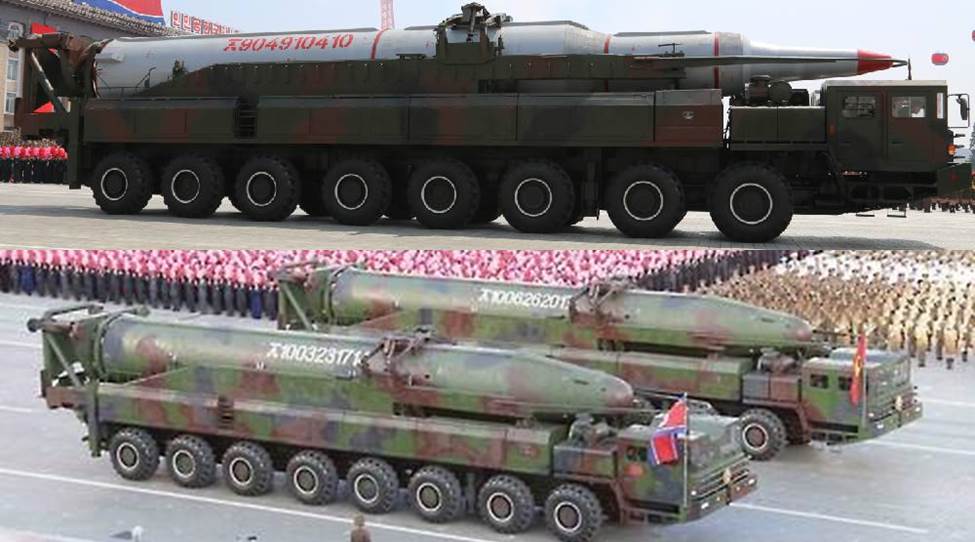A New ICBM for North Korea?
Executive Summary
The intercontinental ballistic missile (ICBM) displayed by North Korea during the military parade in October appears quite different from the versions seen in 2012 and 2013, but a close examination reveals as many similarities as differences. The missile has been shortened and simplified, with two stages instead of three and a blunt warhead replacing the narrow triconic design. The underlying technology is mostly the same—a blend of North Korean engineering and Cold War leftovers from the Soviet Union—but the structural design has been substantially improved. There is reason to suspect that the new structural technology was illicitly obtained from Ukrainian sources. The overall effect is that the missile’s performance is largely unchanged (and remains quite marginal for an ICBM), but the potential reliability has been substantially improved. (However, such a substantial design change late in the missile’s development will likely delay its entry into service until 2020 or beyond.
Examination of external features such as fuel ports and separation motors indicates that the lower stages use the same engines as the 2012/2013 model. These are most likely a cluster of Scud-type engines for the first stage and a second stage based on the Soviet R-27 submarine-launched ballistic missile (SLBM). There is no evidence to suggest that the most recent model incorporates new engines such as those of the R-29 SLBM. However, the propellant tanks for both stages have been lengthened substantially, and the third stage has been removed.
The missile’s structure, of which the propellant tanks are an integral part, has been substantially improved. The new model does not show the extensive riveting seen on earlier models and on debris from the 2012 Unha-3 launch. This apparent alteration suggests the addition of a machined isogrid structure common on modern missiles, reducing the weight and extending the range of the KN-08. There is evidence that North Korea is seeking expertise in this area from previously unknown sources. In June 2012, Ukraine reportedly sentenced two North Korean diplomats who had attempted to photograph secret documents from the Yuzhnoue Design Bureau relating to the construction of improved fuel tanks.[1]
Finally, the triconic warhead of 2012/2013 has been replaced by a short, blunt reentry vehicle. This design is easier to develop and is more likely to survive reentry, at the cost of being less accurate and more vulnerable to missile defenses. It would also allow for a lighter warhead package, perhaps as little as 400 kg.
With a light warhead, the new KN-08 would have a range of roughly 9,000 km, enough to cover the US west coast. This is roughly the performance expected from the 2012/2013 model, but that design was a complex three-stage system that was unlikely to function reliably in wartime. The new design is simpler and more reliable, and thus a more credible threat. But with a major redesign four years into the development process and no flight testing so far, our estimate for initial operational capability slips to 2020 or beyond. While North Korea appears to be making progress towards a road-mobile ICBM, progress has been slower than we expected—a threat postponed, but not prevented.

Sections
- [1]
“N. Koreans convicted of trying to steal rocket technology from Ukraine,” Yonhap News, June 9, 2012, http://english.yonhapnews.co.kr/national/2012/06/09/91/0301000000AEN20120609000700320F.HTML.
